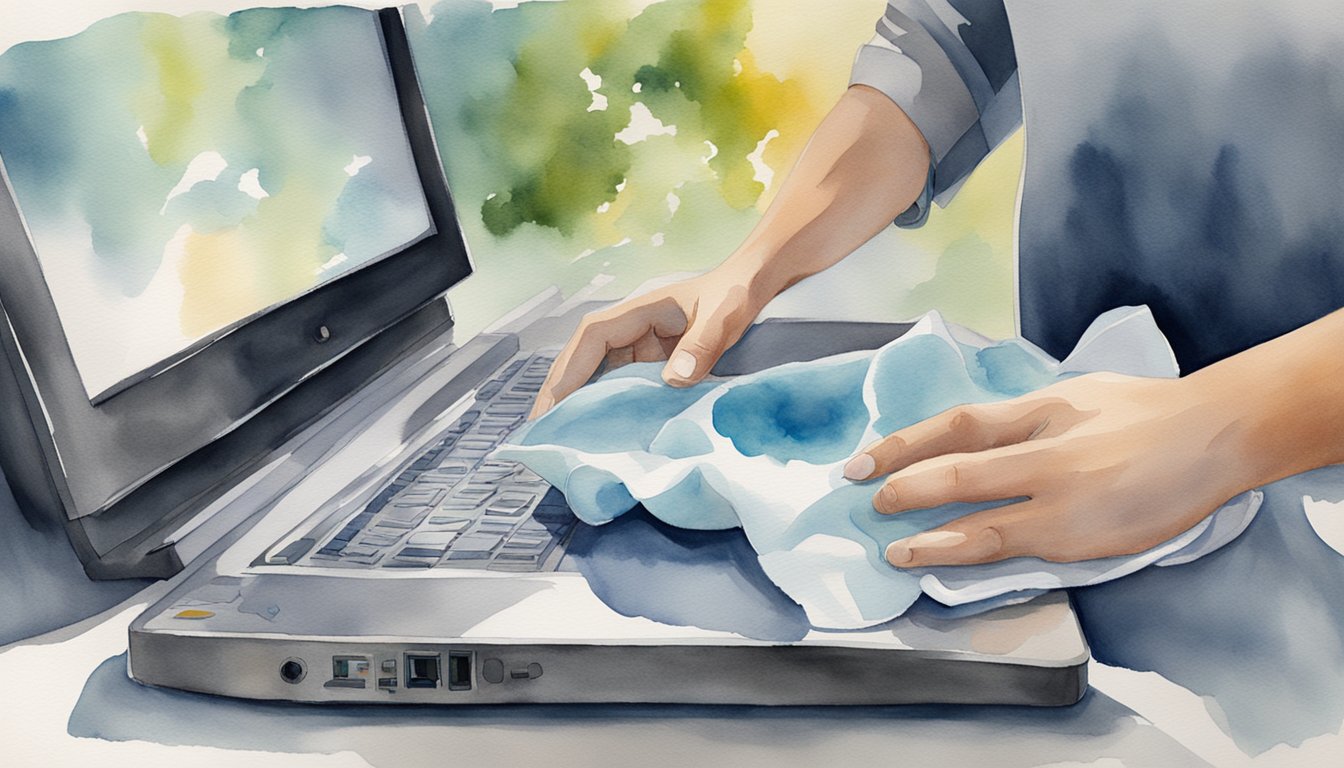Call us: (631) 270 9692
Keeping our computer monitors clean is important for better visibility and longer screen life. We need to use a microfiber cloth to gently remove dust and dirt from the screen. This cloth’s positive charge attracts particles without scratching the surface. For stubborn smudges, dampening the cloth with distilled water works best.
Avoid using regular tap water since it can leave mineral deposits. For a deeper clean, we can mix equal parts of distilled water and white vinegar or isopropyl alcohol. This solution helps in removing oils and fingerprints effectively. It’s important to never spray the liquid directly on the screen to prevent damage.
We can also use a blast of compressed air for quick dust removal, especially for gaming monitors with intricate designs. Keeping a clean monitor not only improves our viewing experience but also ensures our screen lasts longer. For detailed instructions, you can refer to guides like PC Guide, wikiHow, and PC Gamer.
Preparing to Clean Your Monitor
To ensure a safe and effective cleaning process for your monitor, it is important to take necessary safety precautions and use the right cleaning tools.
Safety Precautions
Before we start, let’s disconnect the monitor from power to avoid any risk of electrical shock or electrocution. Always make sure the monitor is turned off and unplugged.
This reduces the chances of damaging the screen and prevents potential hazards. Another key step is to check the user manual for specific cleaning instructions related to your monitor model.
Some screens may have unique cleaning guidelines to follow. It’s also important to work in a well-lit area to see smudges and dust clearly, ensuring we don’t miss any spots during the cleaning.
Choosing the Right Cleaning Tools
Choosing the right cleaning tools is crucial for keeping our monitor in top condition. We should use a microfiber cloth because it is gentle and effective in removing dust and smudges without scratching the screen’s surface. Avoid using rough or abrasive materials that could damage the monitor.
For cleaning fluid, it’s best to use solutions specifically designed for monitors. If a specialized cleaner is not available, we can mix distilled water with a bit of white vinegar or isopropyl alcohol as an alternative.
Never spray cleaning fluid directly on the screen. Instead, dampen the cloth slightly and then wipe the screen. It’s important to use a dry cloth afterward to remove any remaining moisture and prevent streaks.
By following these steps, we can ensure our monitor stays clean and functional.
Effective Cleaning Techniques
In this section, we will discuss how to properly clean your monitor screen. We will cover the techniques necessary to wipe the screen clean, as well as ways to handle more stubborn residues.
Wiping the Screen
First, power down the monitor and unplug it. This prevents any electrical issues and makes it easier to see dirt or smudges on the screen. Use a microfiber cloth because it is soft and won’t scratch the surface.
To start, gently wipe the screen in circular motions. This helps to lift dust, fingerprints, and other surface dirt. Avoid pressing too hard, as too much pressure can damage the screen.
For best results, use a small amount of distilled water or a specialized screen cleaning solution. Spray it onto the cloth, not directly onto the screen. This minimizes the risk of liquid damage. After wiping, let the screen air dry before using the monitor again.
Dealing with Stubborn Residue
Sometimes, basic wiping isn’t enough. For tougher stains or stuck-on grime, we can use a mixture of distilled water and white vinegar or isopropyl alcohol. Mix equal parts into a spray bottle.
Spray a bit of the solution onto a microfiber cloth and gently rub the affected area. This method works well on oily smudges and other persistent marks. Don’t forget to use circular motions for even cleaning.
Avoid using paper towels or regular cloths, which can leave scratches and lint. It’s crucial to be patient and not to scrub vigorously. Let the solution do the work. Once the residue is gone, allow the screen to air dry completely before turning it on.
Maintaining Your Monitor

To keep your monitor in top condition, we should focus on regular dusting and cleaning while also being careful to avoid common mistakes. This helps ensure a clear display and extends the life of our monitor.
Regular Dusting and Cleaning
Dust can easily accumulate on our monitor screens. To manage this, it’s best to regularly use a can of compressed air. This helps blow away loose particles without causing damage.
For deeper cleaning, we should use a microfiber cloth. Dampen the cloth slightly with a cleaning solution, avoiding harsh chemicals like Windex. Gently wiping in a circular motion works best to remove smudges. It’s important to make sure the cloth is only damp, not wet, to avoid any liquid damage to the hardware.
Using abrasive materials, such as paper towels or rough cloths, is not recommended. These can scratch the delicate surface of the screen. Instead, stick to microfiber for its gentle touch. Regular cleaning not only improves the visual quality but also helps maintain the anti-reflective coatings that many expensive screens have.
Avoiding Common Mistakes
One common mistake is using the wrong cleaning agents. We should never use abrasive or corrosive substances, as these can ruin the delicate surface. Tap water can also be problematic because minerals in it can leave residues. It’s better to use distilled water or a proper screen-cleaning solution.
Another error is cleaning the screen while it’s powered on. This not only risks damage but also can cause electric shock. Always power down and unplug the monitor before cleaning.
Let’s avoid using paper towels, which can be too rough. They might leave scratches on the plastic parts or the screen itself. Proper care includes using appropriate materials and methods to extend the monitor’s lifespan and prevent costly repairs or replacements.





